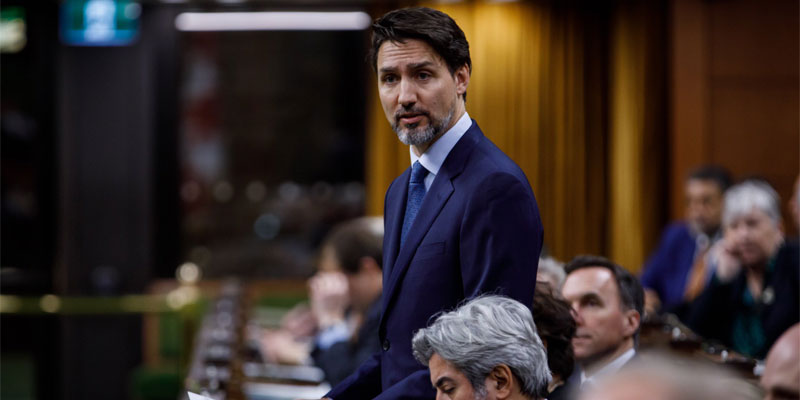Trudeau government’s approach to federal finances anything but ‘prudent’

Since coming to power in 2015, Prime Minister Trudeau—and his finance ministers—have characterized their management of federal finances as “prudent,” an adjective meaning to act with or show care and thought for the future. In other words, acting prudently would mean being judicious about borrowing and debt. And yet, based on this government’s performance pre-COVID, during the COVID recession and its plans for the future, it’s shown little regard for debt accumulation.
The proclivity for spending at the expense of prudence was evident in the first few months of the Trudeau government. The original budget for 2015-16 projected a small budget surplus of $1.4 billion. After the election, however, the Trudeau government immediately increased spending by almost $8.0 billion, turning a small surplus into a $5.4 billion deficit.
Despite promising deficits of no more than $10.0 billion for three years and a balanced budget in 2019-20, the 2016 budget included deficits greater than $20.0 billion for three years and no balanced budget.
Moreover, between the 2018 budget delivered in February and the economic update in October, the government received $5.5 billion more revenue and spent $2.5 billion less in interest costs than budgeted. The unexpected $8.0 billion windfall could have reduced the estimated deficit for 2018-19 by almost half. Instead, the government increased spending by $8.0 billion and the borrowing continued unabated.
Or consider this interesting counterfactual. If the Trudeau government maintained the fiscal policies of the Chrétien government, which required at least small surpluses each year, federal debt would have been reduced by $11.0 billion between 2015-16 and 2019-20 rather than increased by $92.5 billion. Put differently, the federal debt going into the current recession would have been $617.9 billion instead of $721.4 billion.
The last long-term forecast released by the federal government (2018) indicated that the budget would not be balanced until at least 2040. A more recent long-term analysis indicated, without policy changes, no balanced budget would be achieved through to 2050. Despite repeated warnings about the deterioration of federal finances, this government has remained determined to spend more money.
At almost every turn during this recession, the Trudeau government has chosen expediency over effectiveness and prudence. Analyses of recession spending have consistently shown possible large-scale waste and poor targeting of assistance. An analysis of CERB, CESB and several other income stabilization initiatives concluded that up to $22.3 billion (27.4 per cent of the total spent) was likely wasted or poorly targeted to those in need. And remember, all of this was financed by borrowing.
The international evidence corroborates Canada’s poor performance during 2020. The IMF recently released its economic and financial analysis of industrialized countries and estimated that Canada will borrow more in 2020 than any other country (35 covered in total) but will suffer the 11th worst recession and 4th highest unemployment rate.
Despite mounting evidence that the status quo isn’t working, this week’s economic update shows no signs of change. While revenues are expected to be $6.6 billion higher than originally budgeted in the government’s fiscal “snapshot” released in July, the deficit has jumped from $343.2 billion to $366.2 billion. And that doesn’t include another $15.4 billion to address shortfalls in federal pensions, bringing the deficit for 2020-21 to $381.6 billion. Total debt (adjusted for financial assets) is now expected to reach $1.2 trillion this year.
Finally, even though the government forecasts a strong recovery in 2021 (4.8 per cent real GDP growth) and a revenue increase of $60.5 billion, it expects to borrow another $121.1 billion because it plans to spend $82.7 billion above its pre-recession levels, which themselves were historically high in terms of per-person (inflation-adjusted) spending.
None of this evidence and data has deterred the Trudeau government from its preference for yet more spending and an Ottawa-led transformation of the national economy. The latest economic update includes spending to lay the foundation for a national daycare program, substantial green initiatives and stimulus spending between $70 billion and $100 billion over three years, despite an expected economic recovery.
In reality, the Trudeau government has consistently demonstrated a lack of prudence in its approach to public finances. To show care and thought for the future, the government must consider the debt burden being imposed on the next generation of Canadians for spending it’s doing today.
Authors:
Subscribe to the Fraser Institute
Get the latest news from the Fraser Institute on the latest research studies, news and events.



